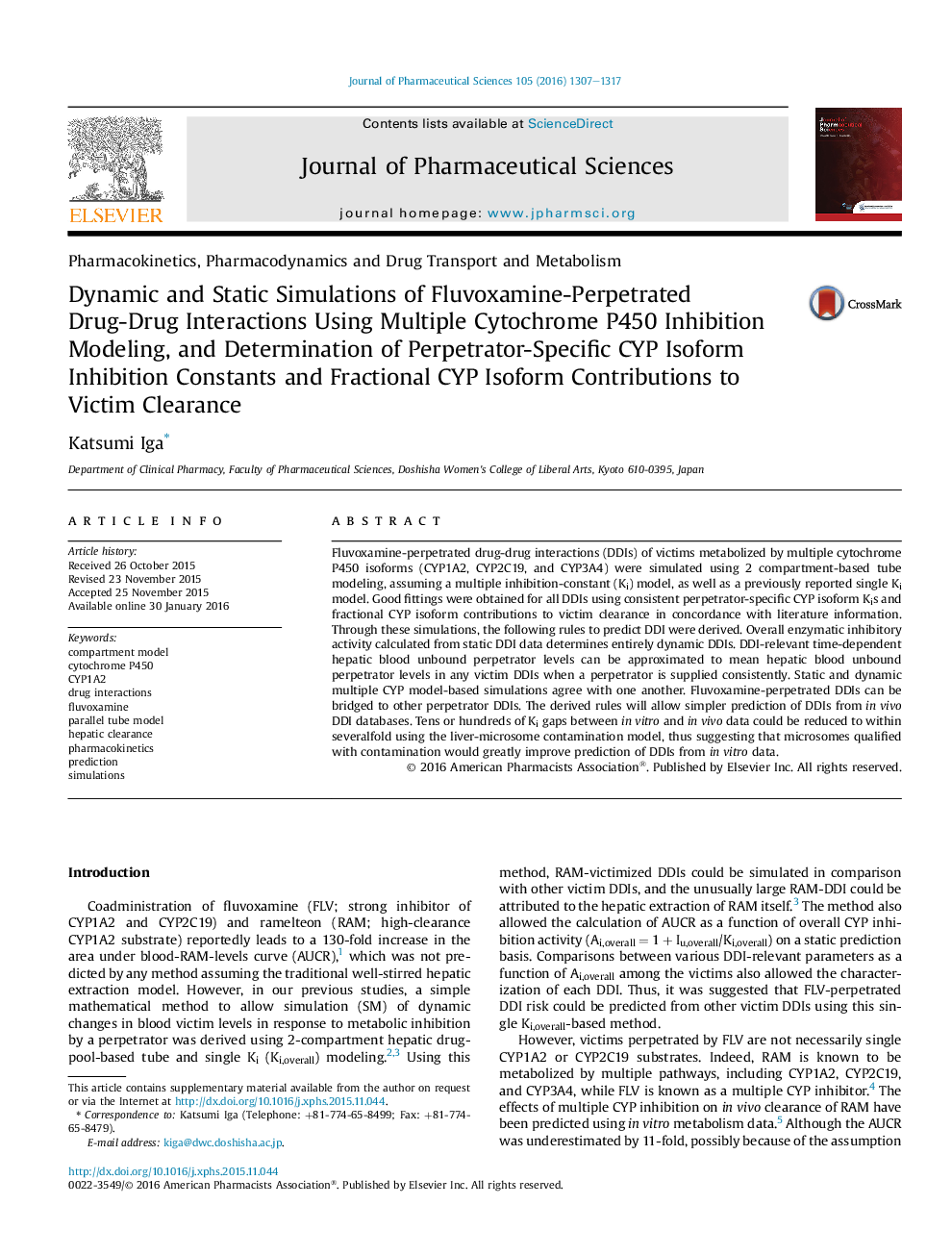| Article ID | Journal | Published Year | Pages | File Type |
|---|---|---|---|---|
| 2484575 | Journal of Pharmaceutical Sciences | 2016 | 11 Pages |
Abstract
Fluvoxamine-perpetrated drug-drug interactions (DDIs) of victims metabolized by multiple cytochrome P450 isoforms (CYP1A2, CYP2C19, and CYP3A4) were simulated using 2 compartment-based tube modeling, assuming a multiple inhibition-constant (Ki) model, as well as a previously reported single Ki model. Good fittings were obtained for all DDIs using consistent perpetrator-specific CYP isoform Kis and fractional CYP isoform contributions to victim clearance in concordance with literature information. Through these simulations, the following rules to predict DDI were derived. Overall enzymatic inhibitory activity calculated from static DDI data determines entirely dynamic DDIs. DDI-relevant time-dependent hepatic blood unbound perpetrator levels can be approximated to mean hepatic blood unbound perpetrator levels in any victim DDIs when a perpetrator is supplied consistently. Static and dynamic multiple CYP model-based simulations agree with one another. Fluvoxamine-perpetrated DDIs can be bridged to other perpetrator DDIs. The derived rules will allow simpler prediction of DDIs from in vivo DDI databases. Tens or hundreds of Ki gaps between in vitro and in vivo data could be reduced to within severalfold using the liver-microsome contamination model, thus suggesting that microsomes qualified with contamination would greatly improve prediction of DDIs from in vitro data.
Keywords
Related Topics
Health Sciences
Pharmacology, Toxicology and Pharmaceutical Science
Drug Discovery
Authors
Katsumi Iga,
